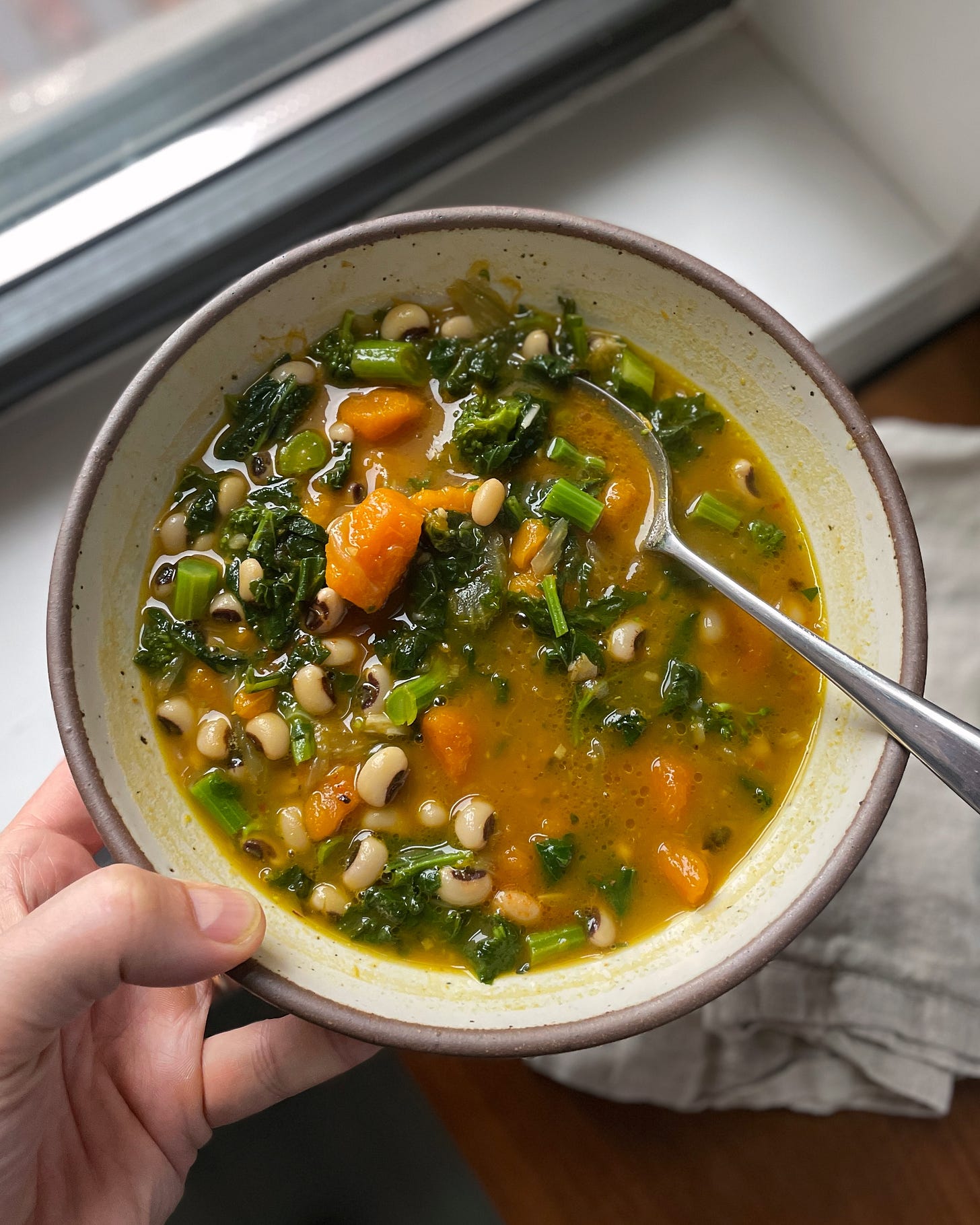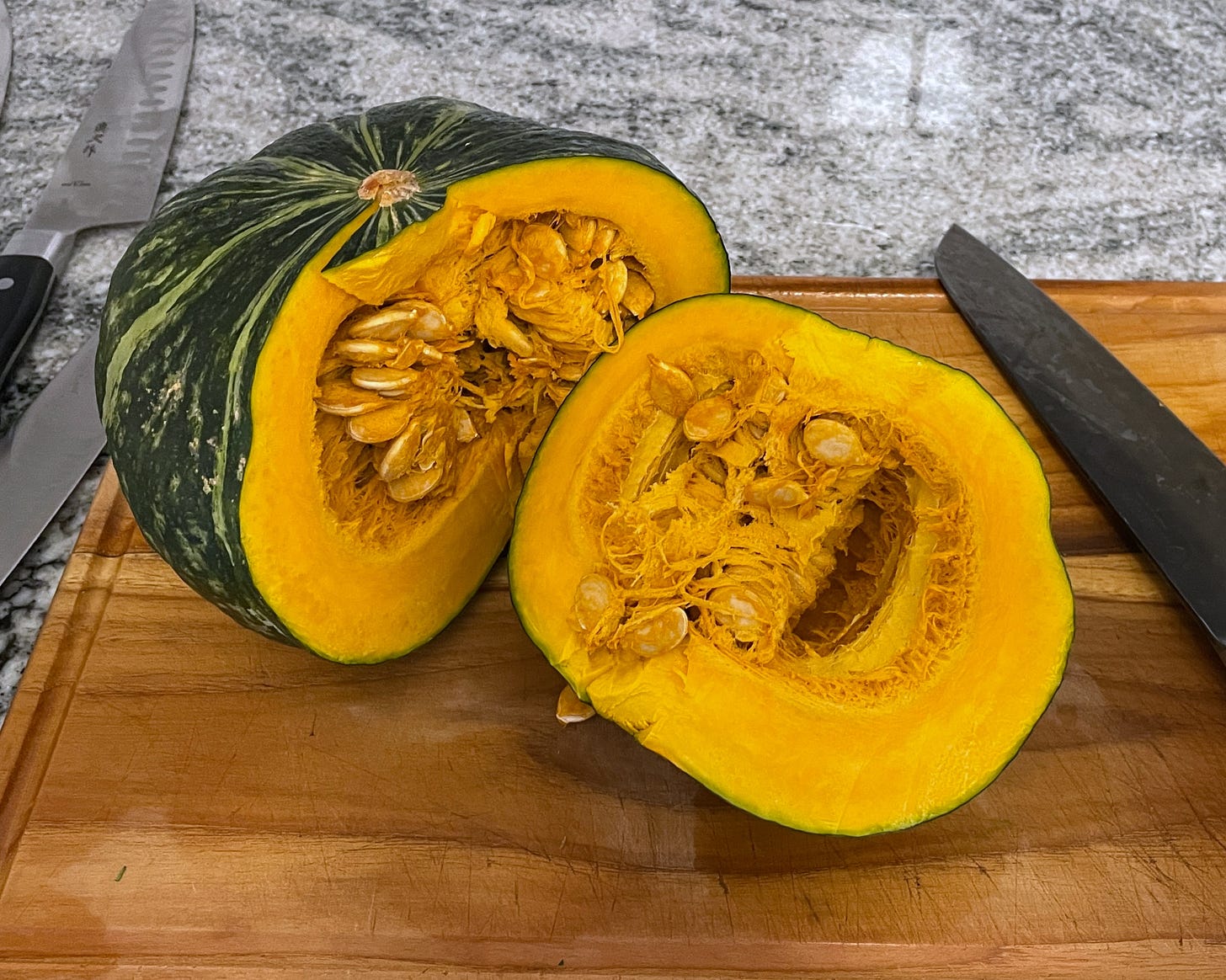The "Chowder Effect" of Kabocha in Soup
The first of March is just as good a time for this Kabocha Soup with Black-Eyed Peas and Broccoli Rabe as January 1 — plus tips on squash prep and vegetable stock a la minute
Usually by March I’m over soup, but this week there’s been nothing that sounds more appealing, both to eat and to cook. Perhaps the unpredictable weather has something to with it, or that the days/weeks/months really seem to be flying. For whatever reason, the usual late-winter soup rut has been kept at bay this year.
You can find the recipe for today’s Kabocha Soup with Black-Eyed Peas and Broccoli Rabe at the bottom of this message, but first I wanted to address a few common sticking points regarding kabocha, as well as homemade vegetable stock.
Kabocha 101
If you’re unfamiliar, kabocha (also called Japanese pumpkin) is a winter squash that to some degree is interchangeable with butternut, acorn, and kuri squash in recipes. It has a dense, starchy texture that to me is almost like a Russet potato when cooked.
In Japanese treatments it’s often simmered or steamed, which caters to its drier flesh. It can be roasted, too, but the dryness becomes pronounced, making the vegetable maybe a little chalky; the flesh really sucks up any fat used to coat it.
And you’ll notice right away that its skin is very tough when raw, but it softens a lot as it cooks. The skin is totally edible, but if you want to remove it (as I do in today’s recipe) it’s easiest to do so after cooking it.
A few years ago writer and gardening expert Margaret Roach told me how she saves the pulpy, seedy innards of winter squash to add to her vegetable stocks, because they lend not only an opaque quality, but body and richness, too. I live by this rule now. It also gives the stock an anchor, from a flavor point of view.
Building on the idea, I’ve found squash can give soups what I think of as a “chowder effect,” and this is particularly true for kabocha. As it simmers in your soup it integrates into the broth, adding luxurious body and richness of squash flavor. You’ll see what I mean if you give this recipe a try.
How to Break Down Kabocha
A lot of people are intimidated by cutting up kabocha, and for good reason. These things can be large, heavy, and in a raw state their skins seem impenetrable. But there are a few tricks that make it easier:
Keep reading with a 7-day free trial
Subscribe to Family Friend by Lukas Volger to keep reading this post and get 7 days of free access to the full post archives.



